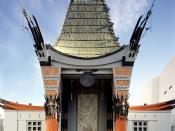Recently produced by Jem Cohen in 2004, the motion picture "Chain" takes us on a journey. Two journeys, actually, journeys that appear to cross, yet inexplicably never meet. This narrative documentary of two women living amidst a homogenous urban/suburban backdrop is a juxtaposition of their respective tales, stories that on the surface area apparently vastly different, but in truth are intimately connected.
Tamiko and Amanda, representing opposite ends of modern society, are our two stars in this film. Tamiko, the well-paid Japanese office worker looking for commercial property opportunities in the US, initially appears to be the more normal of the two, turns out to be awkward, almost robotic and seemingly obsessed with her day job and 'The Company'. Amanda on the other hand is a teenage run-away cobbling together a desperate existence on the margins of society, apparently just another dreamy, job-hunting vagabond with no real purpose in life.
This direct comparison of two vastly different entities is one subtle demonstration of the far-reaching and widely varying effects of globalization, Tamiko being new to the country through her business dealings, and Amanda appearing to be too carefree to make an effort to do anything. Moreover, Amanda's obsession with malls and Tamiko's employment with an international Japanese corporation further affirm this.
Taking a deeper look, the blatant erosion of regional character giving way to corporate homogenization of landscape was cleverly embedded into almost every setting of the movie by director Jem Cohen. Globalization has led to this gradual convergence in scenery that is taking place all over the world, as it was impossible to tell where the movie was being shot. In truth, scenes from the movie had been shot all over the world, but one could only know this having waited for the credits to roll after watching...


